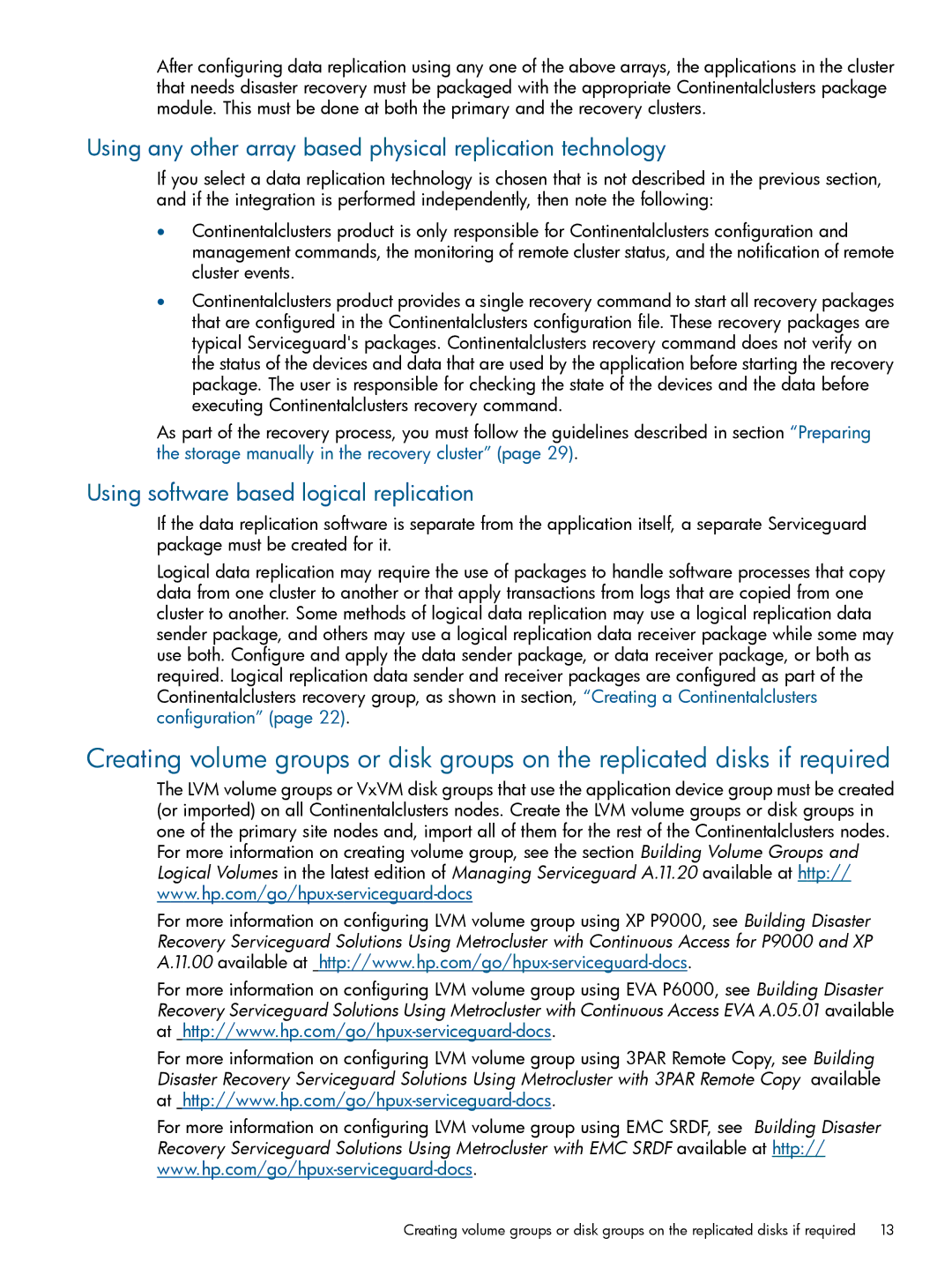
After configuring data replication using any one of the above arrays, the applications in the cluster that needs disaster recovery must be packaged with the appropriate Continentalclusters package module. This must be done at both the primary and the recovery clusters.
Using any other array based physical replication technology
If you select a data replication technology is chosen that is not described in the previous section, and if the integration is performed independently, then note the following:
•Continentalclusters product is only responsible for Continentalclusters configuration and management commands, the monitoring of remote cluster status, and the notification of remote cluster events.
•Continentalclusters product provides a single recovery command to start all recovery packages that are configured in the Continentalclusters configuration file. These recovery packages are typical Serviceguard's packages. Continentalclusters recovery command does not verify on the status of the devices and data that are used by the application before starting the recovery package. The user is responsible for checking the state of the devices and the data before executing Continentalclusters recovery command.
As part of the recovery process, you must follow the guidelines described in section “Preparing the storage manually in the recovery cluster” (page 29).
Using software based logical replication
If the data replication software is separate from the application itself, a separate Serviceguard package must be created for it.
Logical data replication may require the use of packages to handle software processes that copy data from one cluster to another or that apply transactions from logs that are copied from one cluster to another. Some methods of logical data replication may use a logical replication data sender package, and others may use a logical replication data receiver package while some may use both. Configure and apply the data sender package, or data receiver package, or both as required. Logical replication data sender and receiver packages are configured as part of the Continentalclusters recovery group, as shown in section, “Creating a Continentalclusters configuration” (page 22).
Creating volume groups or disk groups on the replicated disks if required
The LVM volume groups or VxVM disk groups that use the application device group must be created (or imported) on all Continentalclusters nodes. Create the LVM volume groups or disk groups in one of the primary site nodes and, import all of them for the rest of the Continentalclusters nodes. For more information on creating volume group, see the section Building Volume Groups and Logical Volumes in the latest edition of Managing Serviceguard A.11.20 available at http://
For more information on configuring LVM volume group using XP P9000, see Building Disaster Recovery Serviceguard Solutions Using Metrocluster with Continuous Access for P9000 and XP A.11.00 available at
For more information on configuring LVM volume group using EVA P6000, see Building Disaster Recovery Serviceguard Solutions Using Metrocluster with Continuous Access EVA A.05.01 available at
For more information on configuring LVM volume group using 3PAR Remote Copy, see Building Disaster Recovery Serviceguard Solutions Using Metrocluster with 3PAR Remote Copy available at
For more information on configuring LVM volume group using EMC SRDF, see Building Disaster Recovery Serviceguard Solutions Using Metrocluster with EMC SRDF available at http://
Creating volume groups or disk groups on the replicated disks if required | 13 |
